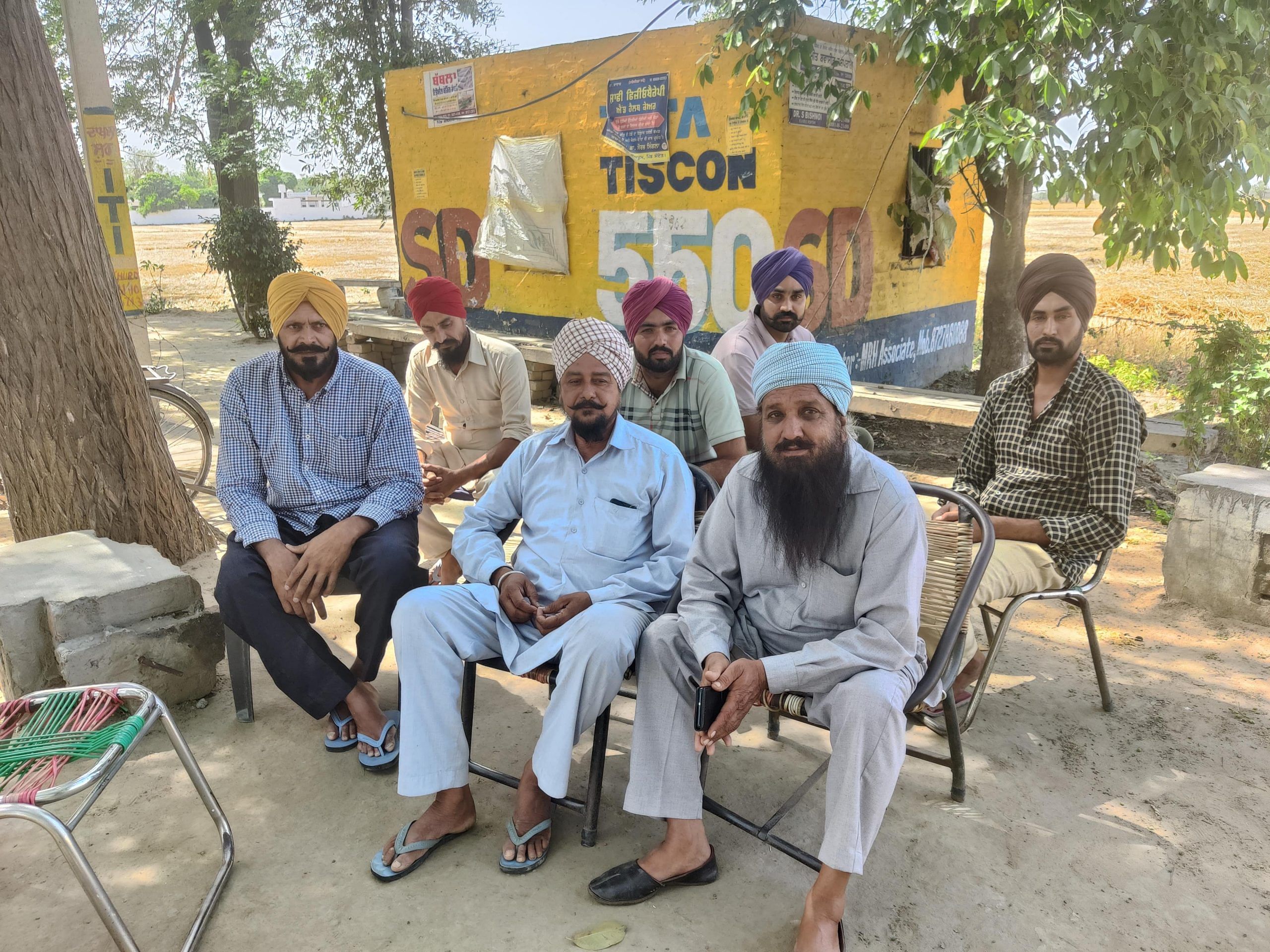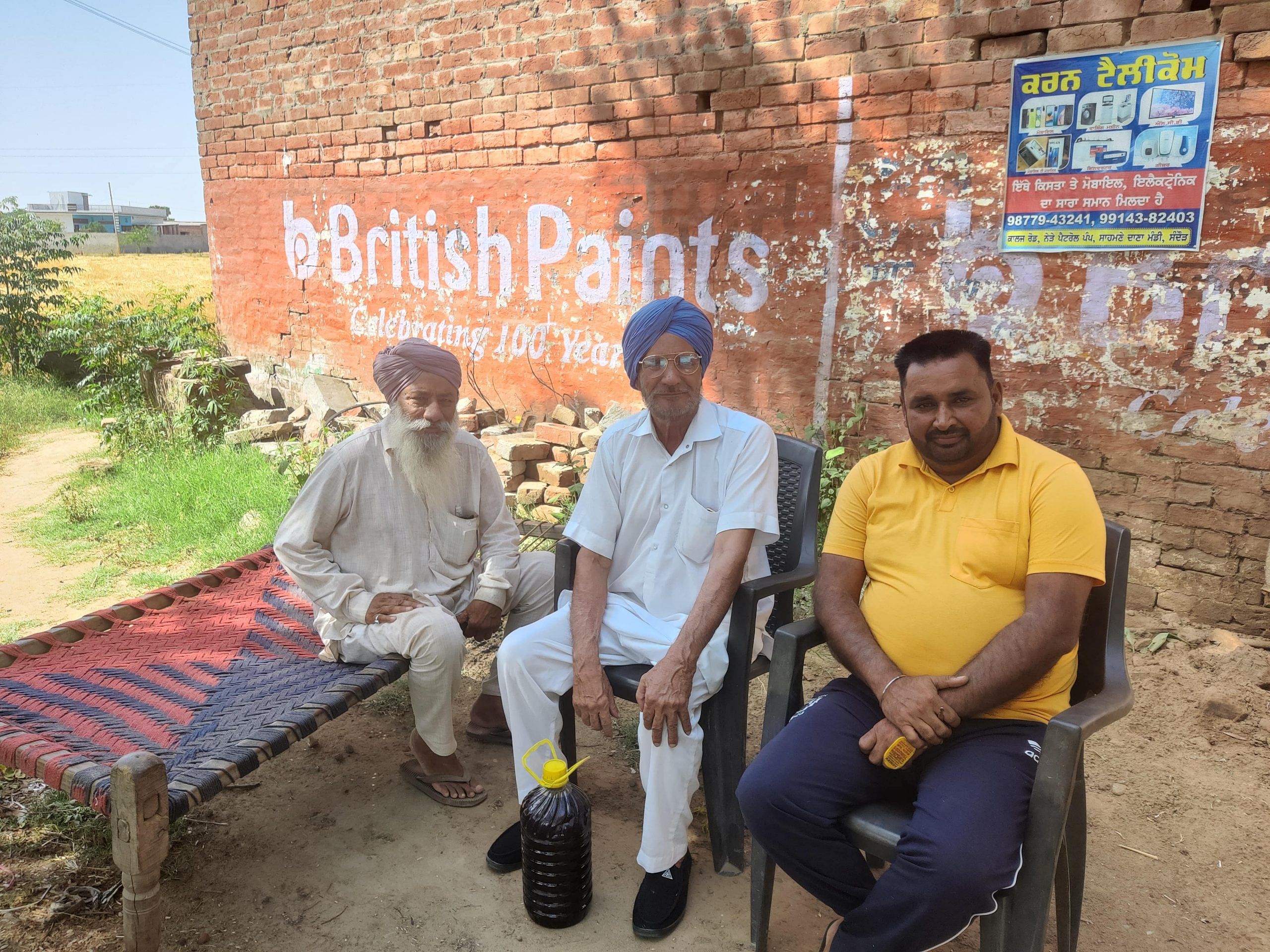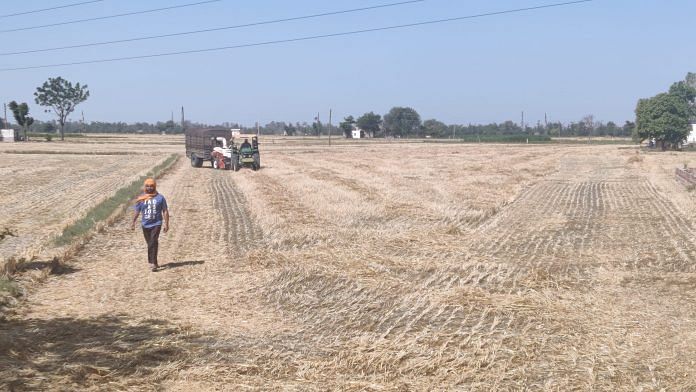Sangrur: Fifty-eight-year-old Karanpal Singh, a farmer from Punjab’s Barnala, has been planting the Pusa-44 variety of paddy for as long as he can remember. After ruling the fields of Punjab and Haryana for over three decades, this variety was banned by the government of Punjab last year.
Karanpal has so many unanswered questions.
“Why did the government introduce [Pusa-44] if it had so many issues? They did not think about the groundwater levels or stubble pollution back then?” Karanpal, whose family has been planting the paddy variety for years, questions while driving his tractor around the field harvesting it.
Punjab Chief Minister Bhagwant Mann banned Pusa-44 in October 2023 to conserve water, stem the stubborn stubble burning problem, and mitigate the air pollution fallout. He pulled Pusa-44 from seed shops and threatened action against sellers. Last month, he thanked Punjab farmers in the Malwa region for heeding his advice and staying away from the water-guzzling variety.
The ban was a complete U-turn from the 1990s when paddy varieties like Pusa-44 gained popularity in Punjab. Government seed shops vouched for it. They cited its benefits and promised that sowing Pusa-44 would “change the lives of farmers” by providing higher yields and higher income
It was a limited experiment in changing farming behaviour—getting farmers to switch to short-term varieties to conserve water and power. The trade-off is lower yield and lower income. But convincing farmers about the larger public good is still a work-in-progress. As part of the pilot phase, Ludhiana, Ferozepur, Faridkot, and Moga gave up Pusa-44. Now, officials plan to expand to the entire state this September-October.
The ban was a complete U-turn from the 1990s when paddy varieties like Pusa-44 gained popularity in Punjab. Government seed shops vouched for it. They cited its benefits and promised that sowing Pusa-44 would “change the lives of farmers” by providing higher yields and higher income, Karanpal recalls.
Reconfiguring farming practices toward sustainability and changing behaviour patterns is almost always met with resistance.

“If they [farmers] can’t see it, they won’t believe it,” says Biju Dominic, chairperson, Final Mile, a Mumbai-based organisation that focuses on behavioural economics and sciences. Problems such as depleting groundwater are not tangible enough to care.
“It’s like the Pepsodent advertisement, where the toothpaste is visually shown fighting little made-up germs. No one has seen the germs in their mouth but when you visualise it for people, they have a better connect,” Dominic explained.
For farmers, long-term problems are also not worth the immediate economic losses, he adds.
“The communication by the government needs to be built considering these factors. How will these problems impact them? Would making a switch mean any incentive? These concerns need to be addressed.”
Pusa-44 variety takes around 155 to 160 days to mature, but guarantees yield of around 40 quintals per acre. PR-126 variety takes only about 120-125 days to mature but there is no certainty on the yield.
Low income, low yield
His fields are burgeoning with wheat, but by next month, he will be returning to paddy, just not the Pusa-44. And the rumblings of discontent are growing louder and louder.
One of the biggest roadblocks preventing farmers from accepting alternative varieties like PR-126 and PR-131 is that they can’t match the yield and quality of Pusa-44. The now-discontinued variety takes longer to mature, around 155 to 160 days from the time of nursery sowing to harvest, but its guaranteed yield of around 40 quintals per acre more than makes up for the time.
On the other hand, the PR-126 variety takes only about 120-125 days to mature, but there is no certainty on the yield.
“It may reach 40 quintals or only give 30 quintals sometimes,” says Harpal Singh, another farmer from Malerkotla district. “A loss of around five quintals is too huge to be ignored.”

Punjab is not the only state to have attempted a ban on popular crop varieties.
For the last six years, the Andhra Pradesh government has been discouraging farmers from cultivating certain varieties of paddy, including the Bondalu variety (MTU-3626)—a favourite among paddy farmers in the state. The government suggested the switch because of its low demand in other states and high sale prices. The announcement by the Andhra government was only suggestive, and the variety continues to thrive.
“That is human nature. When we become used to a certain schedule, product, or crop, in this case, we hesitate to move away. No matter how tempting the alternative is, we tend to gravitate towards our old habits,” says Dr Nand Kumar, a psychiatry professor at Delhi’s All India Institute of Medical Sciences (AIIMS). Any ban is immediately met with resistance, he says.
Kumar suggested that governments should try to make farmers a part of the decision-making process. Providing viable alternatives will also help.
“Hold camps and discussions with farmers. Hear out their concerns and address them. Resistance will be more if a ban is forced. The transition will always be smoother when both parties are convinced,” says Kumar.
Issues with alternatives
At 56, Gurtej Singh, a farmer from Malerkotla district, is excited to go back to school. He has to attend a class at the local Krishi Vigyan Kendra on the alternative paddy varieties suggested by the government. It’s part of the government’s initiative to educate farmers on the change that will sweep through their fields.
Gurtej has done his homework—he has memorised a long list of concerns. The low yield of PR-126 forces farmers toplant more crops to cover losses—and more crops mean more water, which would defeat the government’s pitch for conversion.
“The PR-126 variety matures in 125 days. The next crop sowing is not until November. Why would we leave our fields empty for that period? Most farmers will sow potatoes and maize,” Gurtej says.
Hold camps and discussions with farmers. Hear out their concerns and address them. Resistance will be more if a ban is forced. The transition will always be smoother when both parties are convinced
— Dr Nand Kumar, a psychiatry professor at AIIMS, Delhi
But maize is also a water-guzzling crop. “The water requirement would be the same in the end,” he explained.
It is not just the farmers who need convincing. Punjab’s rice millers are also unsure about the quality of the alternatives.
Hassan Mohammad, a rice miller in the New Grain Market in Malerkotla, said that PR-126’s quality is not on par with Pusa-44’s. These grains tend to break and become discoloured, possibly indicating inferior quality.
“The government gives a fixed MSP (minimum support price) for paddy. If the yield and quality are low, we will have to bear the losses,” Mohammad said.
Air pollution
By getting farmers to make the switch, Punjab is also trying to address the stubble burning problem that lowers air quality to dangerous levels. It’s a major source of pollution not just in the state but across northwest India during winter.
According to officials from the Punjab Agriculture Department, the long maturity period of Pusa-44 leaves farmers little time to clear their fields before the winter sowing season begins.
When it comes to Pusa-44, the fields are sown by June, and the crop is harvested by the end of October. Farmers have barely 15 days to rid their fields of paddy stubble before the next sowing season, which has to happen by mid-November. Burning stubble is a quick fix.

With the onset of winter, plumes of smoke from the fields of Punjab reach Delhi and its neighbouring towns, worsening the pollution levels in these areas. An analysis of pollution sources in Delhi over the years has shown that stubble burning contributed anywhere between 5-30 per cent to Delhi’s seasonal pollution profile.
“Stubble fires can be controlled by giving farmers more viable options. Make better provisions to use stubble in factories or for cattle fodder,” says Harpal.
But farmers don’t have the luxury of time.
They also brave the health impact of these fires. The proximity to smoke makes them vulnerable to a range of respiratory and other illnesses. But for them, livelihood takes precedence over health.
Water
If farmers are suspicious of this change, then the government is desperate. If Pusa-44 continues, the long-term impacts on Punjab’s water table will be irreversible.
The state is staring at a major water crisis.
Punjab’s groundwater levels could drop nearly 1,000 feet by 2039, according to a 2019 report by the Central Ground Water Board. The worst affected was the Malwa region, including Sangrur, Malerkotla, and Barnala, which has the most paddy fields in the state.
Mukhtiar Singh from the Bharatiya Kisan Union in Sangrur blames the extensive use of Pusa-44 for the significant reduction in groundwater levels over the years. It also requires more pesticides and takes longer to mature.
“The dip in the groundwater levels in the area is alarming. Submersible motors that could extract water from a few metres below ground level are now being dug deeper to extract water,” Mukhtiar said. “At this rate, the next generation will be left with no water.”
The Punjab Agricultural University also carried out an analysis between 2019 and 2023 to prove the alarming impact that the Pusa-44 variety was having on Punjab’s ecology. It found that until 2019, around 40% of Punjab’s arable landwas being sown with ‘non-recommended’ varieties of paddy.
Scientists from the university explained that Pusa-44 was a variety developed by the Indian Agricultural Research Institute (of the Indian Council of Agricultural Research) in Delhi in 1993. It had become so popular that by the early 2000s, this variety covered over 70-80 per cent of Punjab’s fields.
Punjab Agricultural University, however, was never in favour of adopting it. The university had warned the central and state governments about possible environmental fallout back in 2002. Their predictions are unfolding now.
“PAU had flagged the problems with this variety right when it was introduced. We have been trying to phase out this variety since 2017 and there has been a difference,” said Makhan Singh Bhullar, a senior agronomist at PAU.
Repeated warnings on the long-term fallout of Pusa-44 have had an impact. Over 20 years ago, 70-80 per cent of paddy seeds were of this variety. Last year, it dropped to around 17 per cent. But it’s too little too late. Even 17% is too high, say agriculture experts.
For better understanding, this amounts to nearly 12 lakh acres of Punjab’s land.
The university also announced in April this year that districts that adopted PR-126 in the last season collectively saved electricity worth Rs 50 crore and 5 billion cubic metres of groundwater.
These were promising results, but the battle against Pusa-44 is far from won.
The state will need to ensure the easy availability of alternative varieties while also cracking down strongly on agents selling Pusa-44 seeds illegally.
Officials from the agriculture department confirmed that between October 2023 and April 2024, no punitive action had been initiated. However, the sale of seeds has been completely banned and regular inspections and raids are carried out.
“We are working towards implementing the ban more smoothly. Our teams will be meeting farmer unions to explain the problems of continuing with Pusa-44,” a senior official from the Punjab agriculture department told ThePrint requesting anonymity.
He blamed private agents for holding on to the banned Pusa-44 seeds. “Strict action will be taken against these agents and black marketers,” the official added.
Other alternatives
Farmers want an alternative that is equally high-yielding with a short maturity period. It’s a big ask, but there is a likely solution.
The IARI has already developed a variety that matches the description. Pusa-2090, an advanced version of the banned variety, is a cross between Pusa-44 and CB-501 (an early-maturing Japonica rice variant). This variety meets all the demands of Punjab farmers—higher yield and better quality while maturing in 125 days.
This new variety also requires less water as compared to Pusa-44.
AK Singh, IARI director, told ThePrint that Pusa-2090 has been tested in the fields of Delhi-NCR for the last two seasons and had emerged as a fit alternative to Pusa-44.
“We have been pushing for its testing in Punjab. Maybe this season we will be able to do it,” Singh said. Until then, it won’t be available to farmers.
Baldev Singh (62) from Ludhiana can’t afford to wait for the Pusa-2090 variety. He’s already procured his cache of PR-126 seeds from the local Krishi Vigyan Kendra for the upcoming Kharif season (sown in monsoon). It’s the first time in 2o years that he’s making a switch in seed variety.
“What is the harm in trying? Every new variety or farming technique is initially met with some resistance. I remember that Pusa-44 adoption also required a lot of coercion from the government. If the new variant proves its viability, we will adapt,” Baldev said.
(Edited by Prashant)



